Executives today are interested in developing a best practice around project management within their organizations. Some of this interest stems from the economy and the need to do more with less—reduced timelines to get a product/service to market to increase revenue, smaller budgets to get projects completed, and reduced project management staff due to layoffs and/or restructuring.
However, exactly what a “best practice” means is different from organization to organization and in many situations, within the organization the definition of a “best practice” differs from department to department or business unit to business unit. Many organizations are unsure how to go about defining what a “best practice” means for their organization and how to effectively go about developing a best practice that works for their organization.

Project Plan – Gant Chart
Establish Project Management
Our experts help you to identify your best practice because every situation will change as individuals and find better ways to the end results. Every customer defines the term “best practice” differently.
According to the suggestions of the Project Management Institute1 we suggest as one way to with developing a project management best practice within our customers as follow:
- Developing PM roles and competence
- Assess stuff against those competencies
- Develop strategic training and mentoring plans
- Develop a knowledge base and support portal
- Continue to monitor, asses and improve
Prior to getting started, the customer needs to be prepared for the change that is about to occur. Most important is to communicate the value to the customer of establishing a project management best practice.
Communication and getting buy-in are the keys for success in developing a project management best practice.
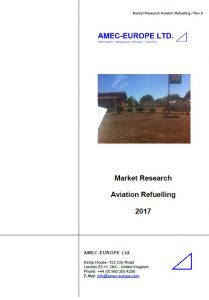
Market Research
Project Consulting
AMEC’s experts advise and assist customers with project specific infrastructure or research projects as well as other plans or problems regarding aviation industries, especially in Ground Fuel Handling.
We develop study concepts, provide advice on the required nature conservation surveys and assessments for infrastructure projects and support you in the preparation for appointments with the authorities.
Our range of services includes handling of objections, preparation of technical comments according ICAO, IATA, EI, JIG, etc.- as well as participation in public hearings
Project Contractual Support
AMEC recognize and understand the needs of your business and that there are times when help and assistance on commercial or contractual issues are needed. Especially if you are establishing a project, you want that assistance from someone you can trust, in a format that you understand and quickly. These issues are sometimes the difference between winning and losing a project, or a project going wrong, or costing you money.
However, rest assured that it is not ordinarily intended that we will reinvent the wheel or attempt to change what is already in place, our service is designed so that our Commercial Managers support our customers ‘existing team.
Our Contractual Support may include the following disciplines.
- Measurement and taking off
- Estimating
- Risk Reviews
- Negotiation and commercial settlement
- Commercial and contractual claim preparation
- Project turnaround
- Etc.
Project Controlling
Our experts develop and monitor the data gathering, management and analytical processes used to predict, understand and constructively influence the time and cost outcomes of a project or program; through the communication of information in formats that assist effective management and decision making.
This process encompasses all stages of a project or program’s lifecycle from the initial estimating needed to ‘size’ a proposed project, through commissioning, the learning (lessons learned) and the forensic analysis needed to understand the causes of failure.
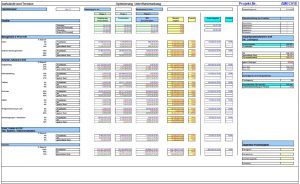
Project Finance
Project Finance
AMEC’s experts work according to the Word Bank Financial Management Manual and the PMI1 definition, where project financial management is a process which brings together planning, budgeting, accounting, financial reporting, internal control, auditing, procurement, disbursement and the physical performance of the project with the aim of managing project resources properly and achieving the project’s development objectives.
Project Financial Management determines how the project will be financed, including the processes to acquire and manage the financial resources for the project. It is more concerned with revenue sources and monitoring net cash-flows for the construction project than with managing day-to-day cost.
Therefore, to continuously monitor the project finances and to ensure the customer’s financial capacity to complete the project are the most critical finance manager jobs. This also includes the assessment and monitoring of financial risks and the implementation of suitable financial risk management strategies.
AMEC defines the project financial management according PMI1 definition as follow:
Project Financial Management Planning
Project financial management planning is the initial phase of financial management. It identifies and provides all financial requirements for the project and assigns financial management roles and responsibilities.
With goals of this financial management process:
- Identification of sources of funds and alternatives
- Investigation of possibilities of short-term financial fluctuations
- Examination of the economic environment
- Development of financial analysis tools
- Evaluation of the most suitable legal entity
- Evaluation of contractual requirements
- Examination of financial impact risk factors
- Tax and other financial factors planning
Project Financial Management Monitoring & Control
Estimate cost is the process of developing and approximation of the monetary resources needed to complete the project works.
Involved activities:
- Accounting
- Financial audits
- Cash-flow analysis
- Financial reporting
- Ex-post evaluations
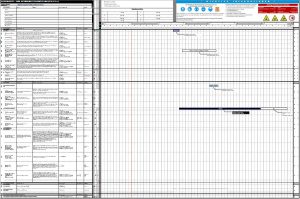
SiGe Plan
HSSE Management
AMEC see Health, Safety, Security and Environment (HSSE) as an critical influence over all business and technical operations. All parties who are involved in the project are members of our team, you will contribute to our aim of shaping a more responsible global safety future.
Our HSSE policy is fundamental to our goal of realization of projects, creating benefits for local communities and reducing the environmental impact of our operations. Implementing our rigorous health, safety, security and environment standards requires acute attention to detail and teamwork and a passion for innovation.
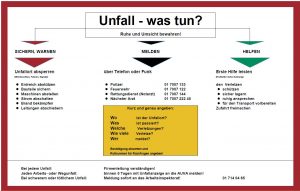
Rescue Plan
We developed a modular toolbox for Air- and Landside construction projects as AMEC standard in EMEA region. That’s allow us to establish and tailor in a short time successfully projects approaches.
Local law and requirements are integrated in our toolbox, that allows us to roll out Air- and Landside HSSE Plans like SiGe and Rescue Plans beside the project are settle down.
AMEC’s knowledge management is your key our customers success and a high level of security.
Project Management
AMEC believe that a project is temporary in that it has a defined beginning and end in time, and therefore defined scope and resources.
Every project is unique in that it is not a routine operation, but a specific set of operations designed to accomplish a singular goal. So a project team often includes people who don’t usually work together – sometimes from different organizations and across multiple geographies. Project management then, is the application of knowledge, skills, tools, and techniques to project activities to meet the project requirements.
AMEC approach follow the PMI1 guide to the Project Management Body of Knowledge (PMBOK® Guide) identifies its recurring elements.
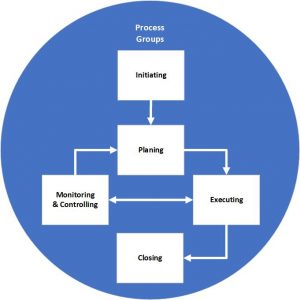
Process Groups
Project management processes fall into five groups:
- Initiating
- Planning
- Executing
- Monitoring and Controlling
- Closing
Project management knowledge draws on ten areas:
- Integration
- Scope
- Time
- Cost
- Quality
- Procurement
- Human resources
- Communications
- Risk management
- Stakeholder management
All management is concerned with these, of course. But project management brings a unique focus shaped by the goals, resources and schedule of each project.
Supply Chain Management in Projects
We believe that supply chain management (SCM) are an integral part for successfully projects and customer satisfaction. Our experts consider the following prerequisites to be mandatory for successful projects:
- Expect the correct product assortment and quantity to be delivered.
- Expect products to be available at the right location.
- Right Delivery Time –Expect products to be delivered on time
- Right After Sale Support – Expect products to be serviced quickly

Manual IBN
Commissioning
Startup and commissioning are the final critical piece of a complex puzzle for a successful aviation ground fuel hydrant system installation. This is the time when the dedicated, hard work of our project managers and field installation teams comes to light.
The preceding months and sometimes years that leads up to this point of closing out a project comes down to the crucial days of commissioning. Successfully connecting all the dots leaves an end-user with a system that has met their expectations, design requirements, and ultimately 24/7/365 reliability.
The checkout of the system against the design documents, submittals, change orders, customer requests, and commissioning documents is a detailed process.
We support our customers in any aspects to use the highly-observed window between the time that system power is available and the time a reliable slot to start with the commissioning.
The checkout of the system against the design documents, submittals, change orders, customer requests, and commissioning documents is a detailed process. Once checkouts are completed and the system is left in automatic operation we leave the job site knowing the operation and safety measures of the system function as intended.
1 Project Management Institute www.pmi.org

